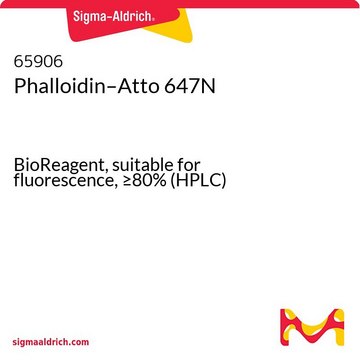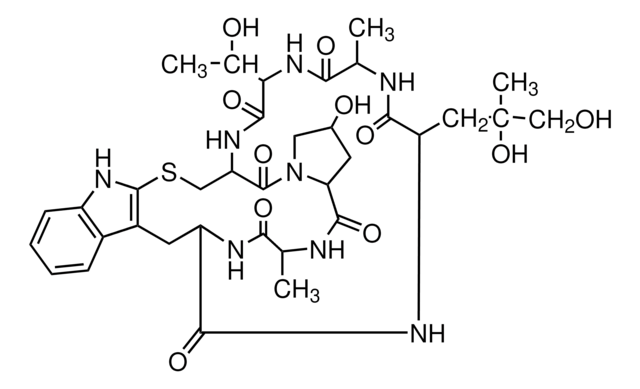49409
Phalloidin-Atto 488
BioReagent, suitable for fluorescence, ≥90% (HPLC)
Synonym(s):
Atto 488, Atto 488 Phalloidin
About This Item
Recommended Products
product line
BioReagent
Quality Level
Assay
≥90% (HPLC)
form
solid
manufacturer/tradename
ATTO-TEC GmbH
λ
in water
UV absorption
λ: 499-505 nm Amax
suitability
suitable for fluorescence
storage temp.
−20°C
General description
Application
Features and Benefits
- Strong Absorption.
- High Fluorescence quantum yield.
- High Photostability.
- Minimal Triplet formation.
Legal Information
Signal Word
Danger
Hazard Statements
Precautionary Statements
Hazard Classifications
Acute Tox. 1 Dermal - Acute Tox. 2 Inhalation - Acute Tox. 2 Oral
Storage Class Code
6.1A - Combustible acute toxic Cat. 1 and 2 / very toxic hazardous materials
WGK
WGK 3
Flash Point(F)
Not applicable
Flash Point(C)
Not applicable
Personal Protective Equipment
Regulatory Listings
Regulatory Listings are mainly provided for chemical products. Only limited information can be provided here for non-chemical products. No entry means none of the components are listed. It is the user’s obligation to ensure the safe and legal use of the product.
JAN Code
49409-10NMOL:
49409-1MG:
Certificates of Analysis (COA)
Search for Certificates of Analysis (COA) by entering the products Lot/Batch Number. Lot and Batch Numbers can be found on a product’s label following the words ‘Lot’ or ‘Batch’.
Already Own This Product?
Find documentation for the products that you have recently purchased in the Document Library.
Customers Also Viewed
Our team of scientists has experience in all areas of research including Life Science, Material Science, Chemical Synthesis, Chromatography, Analytical and many others.
Contact Technical Service










